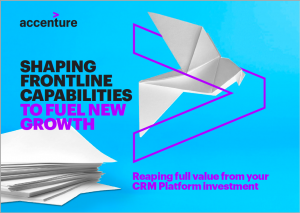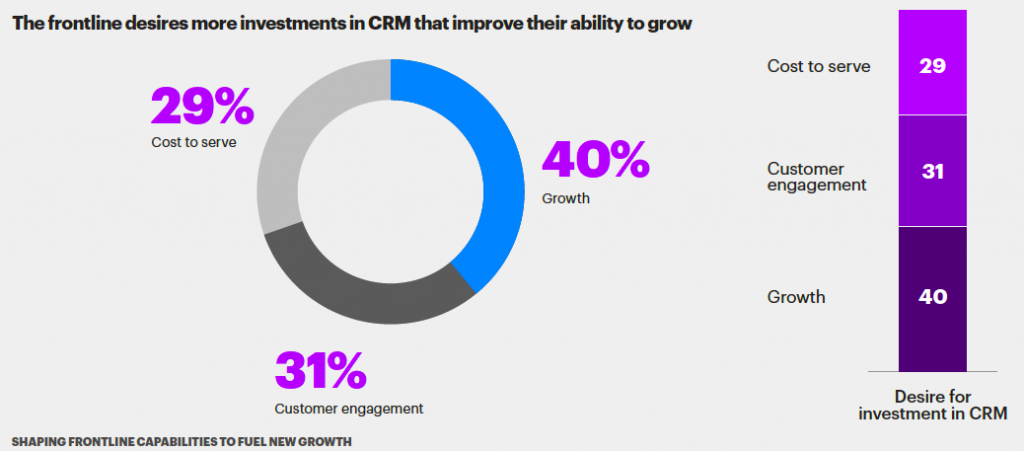I’m a huge music geek. I bought my first cassette when I was five years old from Woolworths. Fast forward a few decades and I’d amassed a collection of roughly 4000 CDs, everything from to Rachmaninov to Radiohead, The Beatles to Blur, and Chaka Khan to The Chemical Brothers. I had some beautiful hi-fi separates, my pride and joy, paid for through summer jobs at university. Unfortunately these didn’t survive my children’s toddler years.
And then I discovered Sonos and Spotify (what a life changing combination!). Soon after that, my CDs started gathering dust. But even though I knew I wasn’t turning back from streamed music, it took me years to get rid of them. Eventually a year ago, with a bit of nostalgic sadness, I sold all but the rarities for less than £200!
I think of that when I talk to clients about how to drive value from their technology investments. Change is hard. It’s not easy to let go of old habits and embrace the new, even if the new is better, easier and more intuitive.
Helping people manage change is essential to getting the full value of technology transformation. It means involving stakeholders throughout the process, especially the actual people who will be using the new technology platform. It also means having a plan for how people will adopt new technology and develop new skills.
Helping people manage change is one key to unlocking the full value of technology transformation.
These are all pertinent points for any technology transformation, but especially for CRM platforms, such as Salesforce and Microsoft Dynamics 365, where tiny improvements can lead to outsized benefits.
For example, we recently worked with a leading financial services client to quantify the financial impact of employee referrals across business units. What did we discover? That if each frontline users made just one or two referrals per year, it would mean $30 million in revenue growth—without any improvements in conversion.
And at another client, we showed how a 1 percentage point improvement in conversions could drive more than $60 million in revenue growth.
A new report from Accenture looks at how organisations can drive more value from their CRM platforms. When we asked senior executives if their CRM platform delivers value, most said yes. But when we asked if they were getting to that value quickly enough, we got a different story.
I should mention that the research focused on CRM platforms for financial services firms, but I think the underlying question—how can we drive more value, faster, from our technology investments?—applies across industries.
Our research highlighted two key actions that can help you get to that value faster.
Design for frontline users
We found that 98 percent of senior executives said they didn’t know about actual frontline business processes. That led to their CRM platforms installed with the best of intentions but disconnected from how people actually work.
98 percent of senior executives said they didn’t know about actual frontline business processes.
Involving frontline users brings so many benefits. First, it helps you navigate tech-clash and deliver a human-centred product that gives users what they want and need. Second, it empowers people to collaborate and create their future in tandem with the business. Third, it opens a channel so people can voice their concerns and speak up—to share the diverse opinions that leaders need to hear but can too easily miss.
When you involve frontline users, you also get a close-up view of how they work. That means you can learn what fuels their work, where friction could derail adoption and how you can help manage change to drive adoption. Because if we’re honest, no one likes change but we can, and do, change (says the man who finally sold his CDs). In this blog post, I wrote about three barriers to change and keys to overcome them.
Designing for frontline users is an important way to drive adoption. When we asked frontline users why they don’t use their company’s new CRM platform, the top two reasons were that it was cumbersome and inefficient, and that they didn’t see what was in it for them. Focusing the design process around users can help mitigate these two issues. In addition, tools like WalkMe can drive digital adoption by providing contextual guidance that engages users and makes it more intuitive to use new products.
Finally, designing for frontline users is an investment in the employee experience, and one that can have outsized benefits for the organisation. For example, an analysis by Glassdoor found that companies that provide a great employee experience outperform the S&P 500 by up to 122 percentage points. Learn more about how to use the employee experience as a competitive advantage.
Design from a blank slate
Companies tend to implement new CRM platforms as a replacement for a legacy system. Now, legacy system transformation is important, and switching from a legacy CRM platform to a leading platform like Salesforce or Microsoft Dynamics 365 is clearly an improvement. But simply swapping new for old misses a key opportunity to make things better.
For example, we found that frontline workers want CRM platforms that help them drive profitable growth for the business.
It raises the question: What else do people want to achieve and contribute to the business? And consequently, what skills do they need in order to do that? What skills will they need in the future?
I recently shared Accenture research on the state of learning in organisations, and how to transform learning in our post-digital world. Our key finding: while the majority of organisations say learning is important, they’re not backing that intent with investment or resources. Learn how to close the gap in your organisation.
Remember the big picture
It’s also important to think about the bigger picture of why your organisation is investing in its CRM capabilities. Typically, a new CRM platform enables you to automate manual tasks and deliver customer insights that can augment and strengthen customer relationships.
In the North American financial services industry alone, Accenture estimates that firms could gain $140 billion through 2025.
Done well, automation and augmentation can deliver tremendous value. For instance, in the North American financial services industry alone, Accenture estimates that firms could gain $140 billion through 2025. Those gains are due to cost savings through automation (up to $23 billiion) with the lion’s share due to productivity gains through augmentation (up to $117 billion).
That means that firms need to focus on the new skills and roles that will be required to compete. Globally, skill-building is lagging the pace of technological change. And if we don’t close the gap, the G20 economies could lose up to US$11.5 trillion in cumulative GDP growth over the next decade.
Together, technology and workforce transformation create opportunities to offer customer and workforce experiences that are both more digital and more human. Digital literacy will become increasingly important, as will expertise in technologies like blockchain, data and AI. Equally important will be the human skills of empathy, relationship development, creativity and problem solving.
Adoption is a moving target
Transformation is about the journey, not the destination. Similarly, adoption will shift over time to stay in sync with people’s needs, the business’s needs and the market’s opportunities.
I want to share a quote from one of the executives we spoke to for our research:
‘We have a lot of go-getters. They’re activators in our business. No matter what, they were going to deep-dive into the new CRM platform experience and just learn how to do it because that is who they are. There are also a lot of people that are very senior that had been using the old platform for a while. You need a really high level of engagement among those people to have them effectively use the new platform. To that end, I think that we still have room to grow into that space as a company. We constantly get asks for additional training, additional resources. It’s something we will always be in the business of providing’.
To me, that quote illustrates the attitude that separates high performers from the pack. It’s an honest look at this executive’s workforce and one that understands what each group needs to be successful. By acknowledging that the company has room to grow, this executive is modeling a growth mindset—the idea that the company isn’t where it wants to be yet, but it’ll get there. And rather than being frustrated at the lack of adoption by some users, this executive is embracing the opportunity to provide additional learning resources.
I’ll leave you with this. CRM can be a powerful fuel for enterprise strategy, and even incremental improvements can unlock tremendous value. One key way to unlocking some of that value is by engaging the people who use it—to help frontline users develop new skills, evolve how they contribute to the business and achieve their full potential.
To learn more about unlocking value by driving adoption and transforming learning:
- Get our latest research on shaping frontline capabilities to fuel new growth.
- Learn why leading in this decade means unlocking the promise of a world made better and easier by tech.
- Discover why learning is critical for the future of business.
- Contact me here, or @andyyoungACN on Twitter.














As a Accenture alumni and a Senior Manager in the customer centricity practice, I am so glad to see the CRM concepts and frameworks have become stronger!! Amazing, what Accenture provided 15 years ago in this area has become even more relevant today, especially in emerging markets, where customer engagement is becoming more of a pre-requisite in conducting business. Looking forward to more great thought leadership and insight from former colleagues.